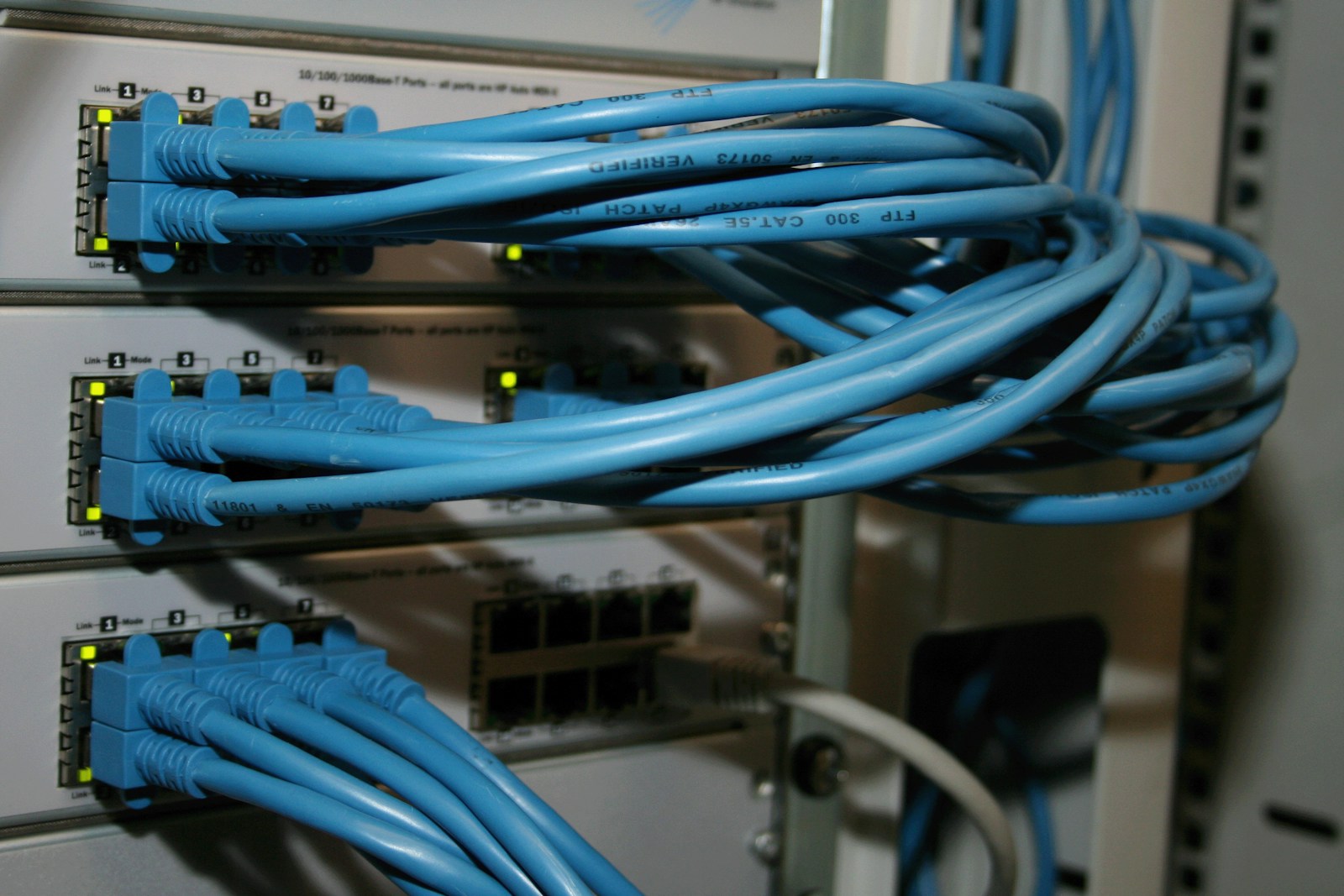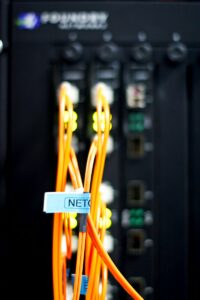Understanding IP Addresses and How They Work
An IP address, short for Internet Protocol address, is a unique numerical identifier assigned to every computer, device, or website connected to the internet. It serves as the digital address that allows data packets to be sent and received between different devices on a network.
IP addresses are composed of four sets of numbers, separated by periods. Each set can range from 0 to 255 and represents a different component of the address. The first set indicates the network address, while the last set represents the host address. Together, they facilitate communication and routing of data over the internet.
When you visit a website, your computer sends a request to the website’s IP address. The website’s server then returns the requested data to your computer using your IP address. This process allows information to flow back and forth across the internet, enabling you to access websites, send emails, and perform various online activities.
Now that we understand what an IP address is and how it functions, let’s explore different methods to determine the IP address of a website. Knowing the IP address of a website can be useful for troubleshooting network issues, accessing geographically restricted content, or even for security purposes.
One common method is to use online tools and services specifically designed for IP address lookup. These tools allow you to enter the website’s domain name and retrieve the corresponding IP address. Examples of popular IP address lookup tools include “WhatIsMyIP.com,” “IPVoid.com,” and “DNSstuff.com.” These platforms provide comprehensive information on the website’s IP address, location, hosting provider, and other relevant details.
Another way to locate an IP address is by using the command prompt utility on your computer. This method is particularly useful if you want to find the IP address of a specific device on your local network. By opening the command prompt and typing in the appropriate command, you can view a list of active connections along with their associated IP addresses.
It is essential to note that tracking IP addresses raises concerns about traceability and privacy. While IP addresses can provide valuable information for troubleshooting or cybersecurity purposes, they also present the risk of potential misuse or invasion of privacy. Internet service providers (ISPs) and websites can track your IP address and collect data about your online activities, raising important questions surrounding privacy and data protection.
IP addresses play a vital role in facilitating communication and data transfer across the internet. Understanding how to locate an IP address, whether it be for troubleshooting, accessing restricted content, or security purposes, can be valuable in various scenarios. However, it is important to be mindful of the privacy implications associated with tracking IP addresses and take appropriate measures to safeguard personal information online.
Methods to Find the IP Address of a Website
When it comes to locating the IP address of a website, there are several methods you can use. Each method may vary in terms of complexity and accuracy, so let’s explore a few of them.
One of the simplest ways to find the IP address of a website is by using an online tool or service. There are numerous websites available that allow you to enter the website URL, and they will provide you with the corresponding IP address. These tools can be quite handy if you want to quickly obtain the IP address without any technical knowledge.
Another method involves using the command prompt on your computer. Open the command prompt and type in “ping” followed by the website URL. Press Enter, and you will see a series of information. Look for the line that says “Reply from” and the IP address next to it. This method is particularly useful if you want to find the IP address of a website without relying on online tools.
Furthermore, you can use the “nslookup” command in the command prompt to find the IP address. Type “nslookup” followed by the website URL and hit Enter. The command prompt will display the IP address associated with the website. This command is commonly used by network administrators and IT professionals to troubleshoot network issues.
If you prefer a more graphical approach, you can use certain software or applications that provide IP lookup functionality. These programs often offer advanced features and additional information about the website’s IP address, such as its physical location and the hosting provider. They can be useful for those who require in-depth details about a particular IP address.
It’s essential to note that locating an IP address doesn’t necessarily mean you can pinpoint an exact physical location. While IP addresses can provide general information about the geographical area, they are not precise enough to determine the exact address of a device or a website.
There are multiple methods available for finding the IP address of a website. Whether you choose to use online tools, command prompt commands, or specialized software, it’s crucial to understand the limitations and complexities involved in IP address tracking. Always consider privacy concerns and legal implications when using IP address information.
READ ALSO: Google Data Analyst Jobs
How to Locate an IP Address Using Online Tools and Services
Finding the IP address of a website or a person can be a useful skill in today’s digital age. Whether you are troubleshooting network issues or investigating a potential security breach, knowing how to locate an IP address can provide valuable information. Fortunately, there are various online tools and services available that can help with this task. In this guide, we will explore some of the most effective methods to locate an IP address using these tools and services.
One of the simplest ways to find an IP address is by using an IP lookup tool. These tools allow you to input a domain name or an IP address and retrieve relevant information. They usually provide details such as the geographic location of the IP address, the Internet Service Provider (ISP), and sometimes even the organization or company associated with it. Some popular IP lookup tools include IP Geolocation Database, IP2Location, and MaxMind GeoIP.
Another handy online service for locating IP addresses is the WHOIS database. WHOIS is a protocol used for querying databases that store domain registration information. By entering the domain name of a website, you can access data about the IP address associated with it, as well as other details such as the domain’s registration date, expiry date, and contact information. The most commonly used WHOIS service is provided by the Internet Corporation for Assigned Names and Numbers (ICANN) and can be accessed through their website.
If you need to locate the IP address of an email sender, email header analysis can be a useful technique. When you receive an email, the email header contains valuable information about the sender, including their IP address. By accessing the email header and using online tools designed for email analysis, you can extract and identify the sender’s IP address. Services like MX Toolbox Header Analyzer and IP Tracker can assist you in this process.
In addition to these specific tools and services, there are also comprehensive online platforms that offer a wide range of IP address tracking capabilities. These platforms often provide a combination of IP lookup, WHOIS lookup, email header analysis, and other related functionalities. They can be particularly useful for professionals in cybersecurity, network administration, or digital forensics. Some examples of these platforms include IP Tracker by IP Location, WhatIsMyIPAddress, and Spur.
To locate an IP address using these online tools and services, simply open your preferred browser and search for the tool or service you need. Once you have accessed the desired website, follow the instructions provided by the tool or service to input the relevant information and retrieve the IP address details you are looking for. Remember to exercise caution and use these services responsibly and within legal boundaries.
Locating an IP address has become easier and more accessible with the help of online tools and services. By utilizing IP lookup tools, WHOIS databases, email header analysis techniques, and comprehensive IP tracking platforms, you can gather valuable information about the IP addresses you are interested in. Whether you are a network administrator, a security analyst, or simply someone with a genuine need for IP address information, these online resources can assist you in your endeavors.
Using Command Prompt to Find the IP Address of a Computer or Device
When troubleshooting network issues or investigating suspicious activities, it can be helpful to know how to locate the IP address of a computer or device. One way to accomplish this is by using the Command Prompt utility in Windows. By following a few simple steps, you can quickly find the IP address you are looking for.
To begin, open the Command Prompt by pressing the Windows key + R on your keyboard to bring up the Run dialog box. Type “cmd” and press Enter. This will launch the Command Prompt window.
Once the Command Prompt window is open, you can use the following command to retrieve the IP address of your computer or device:
ipconfig
After entering this command, a list of network connections and their corresponding IP addresses will be displayed. Look for the network connection that is currently active, which may be labeled as “Ethernet adapter” or “Wi-Fi adapter.” Under the corresponding section, you will find the IP address assigned to your computer or device.
In addition to finding the IP address of your own computer, you can also use the Command Prompt to locate the IP address of other devices on your network. To achieve this, you will need to know the device’s hostname or IP address. Once again, open the Command Prompt and type the following command:
ping [hostname or IP address]
Replace “[hostname or IP address]” with the actual hostname or IP address of the device you want to locate. Press Enter to execute the command. The Command Prompt will send a series of network packets to the specified device and display the corresponding IP address.
It is important to note that the IP address you obtain using the Command Prompt may be the internal IP address assigned by your local network. If you need to locate the public IP address of a device or computer, you can use various online tools and services specifically designed for this purpose.
The Command Prompt utility in Windows provides a simple and efficient method to find the IP address of a computer or device. Whether you are troubleshooting network issues or conducting investigations, knowing how to locate an IP address can be invaluable. By following the steps outlined above, you can quickly retrieve the information you need and proceed with your tasks effectively.
Traceability and Privacy Concerns Associated with Tracking IP Addresses
As the internet has become an integral part of our daily lives, the use of IP addresses for tracking and identification purposes has also increased. An IP address, or Internet Protocol address, is a unique numerical label assigned to every device connected to a network. It serves as the device’s online identifier, enabling communication and data exchange between devices.
While IP addresses are essential for the functioning of the internet, there are concerns about their traceability and the implications this has for privacy. With the ability to track IP addresses, it is possible to gather information about the location, internet service provider (ISP), and even the identity of the user behind the IP address.
One major concern is the potential misuse of this information by malicious individuals or organizations. Hackers, for example, may use IP addresses to launch attacks or gain unauthorized access to a system. By tracing an IP address, they can identify vulnerabilities and exploit them. Therefore, it is crucial to protect personal and sensitive data by implementing robust security measures and regularly updating software and antivirus programs.
Moreover, tracking IP addresses has implications for online privacy. Internet service providers and websites can collect and store a user’s IP address along with other browsing data. This information can be used to build a detailed profile of an individual’s online activities, including the websites they visit, the products they purchase, and the content they engage with.
Concerns about privacy have led to the development of various tools and technologies aimed at preserving anonymity and protecting online identities. Virtual private networks (VPNs), for example, allow users to mask their IP addresses and encrypt their internet traffic, making it difficult for third parties to track their online activities.
It is worth noting that while IP addresses can provide valuable information for legitimate purposes, such as identifying the source of network attacks or combating online fraud, it is crucial to strike a balance between traceability and privacy. Legislation and regulations play a vital role in ensuring that IP address tracking is conducted within legal boundaries and with full respect for individuals’ privacy rights.
The traceability of IP addresses raises concerns about privacy and data security. The ability to track IP addresses can be both advantageous and potentially harmful, depending on how the information is used. To protect privacy and maintain online security, individuals should be aware of the implications of sharing their IP addresses and take appropriate measures, such as using VPNs and implementing robust security practices.
Conclusion
Understanding how to locate an IP address is essential for various reasons. Whether you need to troubleshoot network issues, track suspicious online activities, or protect your privacy, having knowledge about IP addresses and the methods to locate them can be valuable.
We have explored what an IP address is and how it works. An IP address is a unique numerical label assigned to each device connected to a computer network. It serves as a digital identifier, allowing devices to communicate with each other. By understanding the structure of an IP address and its different components, we can gain insights into its functionality.
We have delved into various methods to find the IP address of a website. From using online tools and services, such as IP lookup websites, to leveraging domain name system (DNS) server records, we have explored both user-friendly and technical approaches. These methods enable us to retrieve the IP addresses of websites, providing valuable information for various purposes, such as accessing content and troubleshooting network issues.
Moreover, we have discussed how to locate an IP address using online tools and services. With a myriad of online platforms available, users can simply enter a website URL or domain name to retrieve the associated IP address. These tools often provide additional information, such as the physical location and Internet Service Provider (ISP) associated with the IP address. Such data can be particularly useful for geolocation purposes or investigating suspicious online activities.
We have also explored the use of the command prompt to find the IP address of a computer or device. Using the “ipconfig” command in Windows or the “ifconfig” command in Linux, users can access detailed network configuration information, including the IP address. This method is especially useful for network administrators or advanced users who prefer a command-line interface for retrieving IP addresses.
We have addressed the traceability and privacy concerns associated with tracking IP addresses. While IP addresses can provide valuable information, they also raise concerns about privacy and anonymity. It is important to be aware of these implications and take appropriate measures to protect one’s online identity. This includes using virtual private networks (VPNs), which can mask the IP address and encrypt internet traffic, enhancing privacy and data security.
The ability to locate an IP address is an essential skill in today’s connected world. By understanding the concepts and methods discussed in this article, users can navigate the digital realm with confidence, whether it is for troubleshooting network issues, investigating online activities, or safeguarding their privacy.
Originally posted 2024-02-03 19:46:31.




